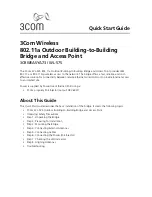
Configuring Voice
Configuring Voice Services
92
Cisco SRP500 Series Services Ready Platforms Administration Guide (SRP520 Models)
6
Adjustable Audio Frames
Per Packet
This feature allows the user to set the number of
audio frames contained in one RTP packet.
Packets can be adjusted to contain from 1–10
audio frames. Increasing the number of packets
decreases the bandwidth utilized, but it also
increases delay and may affect voice quality. RTP
packets are configured in the SIP page. See
SIP
Page, page 120
.
DTMF Relay
The SRP may relay DTMF digits as out-of-band
events to preserve the fidelity of the digits. This
can enhance the reliability of DTMF transmission
required by many IVR applications such as dial-up
banking and airline information. DTMF Relay is
configured in the DTMF Tx Mode parameter in the
Line pages. See
Line Pages (1–2), page 156
.
Call Progress Tones
The SRP has configurable call progress tones.
Call progress tones are generated locally on the
SRP so that an end user is advised of status (such
as ringback). Parameters for each type of tone (for
instance a dial tone played back to an end user)
may include frequency and amplitude of each
component, and cadence information. The Call
Progress tones are configured in the Regional
page, See
Regional Page, page 136
.
Call Progress Tone Pass
Through
This feature allows the user to hear the call
progress tones (such as ringing) that are
generated from the far-end network.
Echo Cancellation
Impedance mismatch between the telephone and
the IP Telephony gateway phone port can lead to
near-end echo.
The SRP has a near-end echo canceller that
compensates for impedance match. The SRP also
implements an echo suppressor with Comfort
Noise Generator (CNG) so that any residual echo
is not noticeable. Echo Cancellation is configured
from the Line pages. See
Line Pages (1–2),
page 156
.
Feature
Description
















































